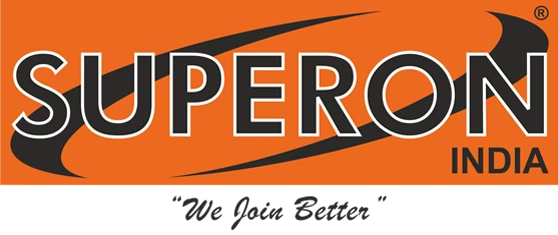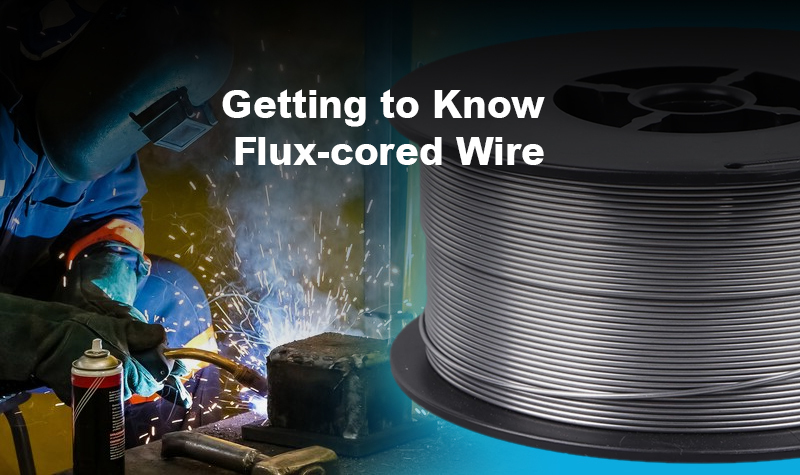Stick welding is a pretty simple solution for outdoors since it has portability: no shielding gas, no wire feeders, etc. However, the downside of stick welding is that operators frequently have to stop to change out electrodes, resulting in downtime but it also creates a reduction in deposition efficiency, since there is always a stub loss that can impact your bottom line. But what if you could make great quality welds outdoors and not have those productivity slowdowns associated with changing out stick electrodes? Consider using self-shielded flux-cored wires (FCAW-S) so that welders can continue to work without interruption.
FCAW-S wires that are made today are not the same wires that were available several years ago. Improvements have been made to formulations resulting in enhanced operator appeal and mechanical properties. The wires produce smoother and cleaner welds, with less spatter and fast-freezing weld pools. These flux-cored wires deliver high performance and quality welds in many industries. Although flux-cored wires have distinct welding characteristics and requirements, pros and cons — understanding these aspects can help you determine if they are right for you.
Understanding Flux Core Wire
Flux core wire is a welding consumable with a core of flux/melting material. This wire is designed to be used with flux cored welding processes which use the flux melt within the wire for its shielding gas. This gas protects the weld pool from atmospheric pollutants, performing in cleaner and more stable welds. Well, flux- cored wires have been around since the 1950s and are available in two main versions based on their performances: gas- shielded and self-shielded. Both types are composed of an outer sheath and are filled with flux, a mixture of alloys and deoxidizers, which are necessary to cover the weld from pollutants.
Gas-shielded flux-cored wires, as their name suggests, utilize an external supply of shielding gas to protect the weld; self-shielded wires do not. The self-shielded wire generates shielding gas through its flux and is a very portable wire and is particularly suitable for outdoor welding applications (structural steel, shipbuilding, bridge work, etc.). The common uses for gas-shielded flux-cored wires, for example, include general fabrication; pressure vessels; petrochemical piping; and heavy equipment manufacturing.
Uses and Key Characteristics of Flux Cored Wires
The two main types of flux-core wire, self-shielded and gas-shielded wires possess unique uses for specific working environments. The welding process of self-shielded flux-core wire generates its protective gas during operation without requiring an external shield tank. The method of generating its shielding gas through welding operation allows convenient outdoor or distant area welding with no need to handle gas cylinders. Defense outlet applications employ self-shielded flux core wire due to its ability to create protection gas during welding operations while maintaining good impact strength in low temperatures. Because of its design flux-cored self-shielded wire produces increased amounts of spattered material along with smoke while operating. Between welding passes you need to wash away the slag material that regularly accumulates due to this welding method. The automatic wire feeding during arc welding allows operators to achieve significantly faster results compared to manual stick welding processes since the wire supply remains uninterrupted.
Gas-shielded flux-core wire, on the other hand, needs an external gas source—usually 100% CO₂ or a mix of CO₂ and argon. The shielding gas protection from this welding mechanism works best in protected environments since outdoor conditions expose the shielding gas to wind that damages weld quality. Gas-shielded wire cells produce welds that appear better because it creates minimal spatter resulting in easier workability and better appearance.
Both types of weld wire become available in diverse dimensional options ranging from 0.035" to 7/64" and serve as suitable options for welding several metals including mild steel, low-alloy steel, stainless steel and nickel alloys. Gas shielded wires demonstrate different strengths from 70 KSI for mild steel all the way up to over 120 KSI for strong metal compositions.
Gas-shielded wire has a lower price per pound though its usage requires both gas consumption and setup expenses. Although portable Self-shielded wire has reduced effectiveness due to its extra flux components. You should select the appropriate welding wire by considering your work requirements combined with budget limitations and operational location.
Equipment Requirements for Flux Core Wire
Getting optimal flux-cored results means selecting suitable wires in addition to using trained personnel with the correct equipment. Standard constant-voltage power sources can operate FCAW-S and FCAW-G by using direct-current electrode negative (DCEN) polarity for straight welds or direct-current electrode positive (DCEP) polarity for reverse welds based on wire composition.
Welders frequently establish difficulties when preparing equipment to use FCAW-S by choosing an incorrect polarity for the welding power supply. Most FCAW-S wires work effectively under DCEN even though many different wire welding processes run on DCEP. You should always rely on operating recommendations provided by filler metal manufacturers.
The majority of FCAW-S wire operations require voltage-sensing wire feeders as their standard companion. The welder operates the power source voltage setting but controls wire speed (which affects the amperage output) through the feeder device. The technology enables operators to stay longer on site because they need to make power source trips less frequently. The adjusting CTWD causes voltage-sensing wire feeders to automatically control voltage fluctuations during the welding process.
A consistent wire flow with high-quality welds depends on V-knurled drive rolls found in wire feeders when working with both types of wires. The flexibility of flux-cored wire allows its deformation when utilizing drive rolls which are not suitable for the application.
Proper Technique
The welding procedure requires the implementation of a drag technique. A proper drag angle suitable for flat and horizontal and overhead positions should be maintained at 15 to 45 degrees. The best gun angle for vertical-up welds ranges between 5 to 15 degrees. A controlled welding speed at sufficient speed prevents the weld pool from outrunning the arc thus preventing potential slag inclusions.
Welders using flux-cored wires need to follow correct extenders for their electrodes because self-shielded wires react significantly to this parameter. The normal stick-out distance equals 2 inches or more depending on the wire diameter and type of wire as manufacturer specifications indicate. Check the requirements for each wire.
Stick-out that is not properly set leads to problems including burnback and worm tracking as well as entire slag inadequacy and hard slag removal operations. The resistive heating from stick-out plays an essential role in raising the deposition rate. The resistance boost enables less circuit flow through the arc whereby operators may elevate wire feeding speed to enhance the deposition rate.
Benefits of Using Flux-Core Wire
- High Deposition Rates: The wire can be welded speedily and increases productivity.
- Versatility: It is an apt choice for welding thick materials and for out-of-position welds.
- Portability: Especially with self-shielded wires, no bulky gas cylinders are needed which adds an element of convenience for field work.
- Penetration: Deep penetration can be achieved, which allows for strong welds on thicker materials.
Common Applications of Flux Cored Wires
Flux-core wire has applications in nearly every industry.
- Construction: Steel welded structures are used to build and repair strong joints in buildings and bridges.
- Shipbuilding: Flux-core wire is extremely useful for welding the large sections of a ship and is particularly useful in an outdoor environment.
- Automotive repairs: Flux-core wire fills the niche of repairing heavy duty trucks and similar vehicles and equipment.
- Pipeline welding: Pipeline construction and repair benefit from robust welds accomplished using flux-core wire.
Final Thoughts on Flux Core Wire
The successful use of any type of filler metal requires proper training as an essential prerequisite. Choices regarding flux-cored wire use require new welders to receive supplementary training that includes certification specific to their project needs such as transitioning from SMAW electrodes to FCAW-S wires for structural purposes.
Welders would switch from using an FCAW-G wire to an FCAW-S for the application. Different AWS classifications exist between flux-cored wires because of which companies might need to perform additional testing to qualify these changes.
The necessary operating parameters and work procedures for any application and flux-cored wire need to be strictly followed by the welder. When technique works jointly with operation it creates improved weld quality alongside increased productivity together with reduced downtime expenses.
Also Read: Arc welding vs. gas welding: the bottom line

